Vilaflor is located in a mountainous region in the southern part of Tenerife. This village contains an indescribable natural beauty that you should see with your own eyes. In this place you will find several points of interest, such as ‘guachinches’ where you can enjoy Canarian cuisine or local craft shops.
Throughout history, the life of the chasneros, which is what its residents are called, has been linked to the countryside and livestock. The economy of this municipality is mainly characterised by agricultural activity, especially the cultivation of vines and potatoes. It is also important the livestock, because in Vilaflor they produce delicious goat cheeses that you will not want to miss.
If you visit Vilaflor, you should not leave without tasting the handmade sweets of Mª Isidra Dorta Fumero, an authentic ‘chasnera’ who learned the art of pastry at age 12, although it was at age 41 when she began to work professionally in the market of the village. There are many typical spanish sweets Mª Isidra prepares: ‘rosquetes de vino’, ‘mantecados’, biscuits, meringues, ‘quequi’, etc. However, her signature dish are the ‘tortas chasneras’, some flatbreads or almond biscuits typical of Vilaflor.
Another of the village’s special attractions are its history and the ancient English presence in the village. In this article we would like to tell you some of the legends that Vilaflor keeps, do not miss it!
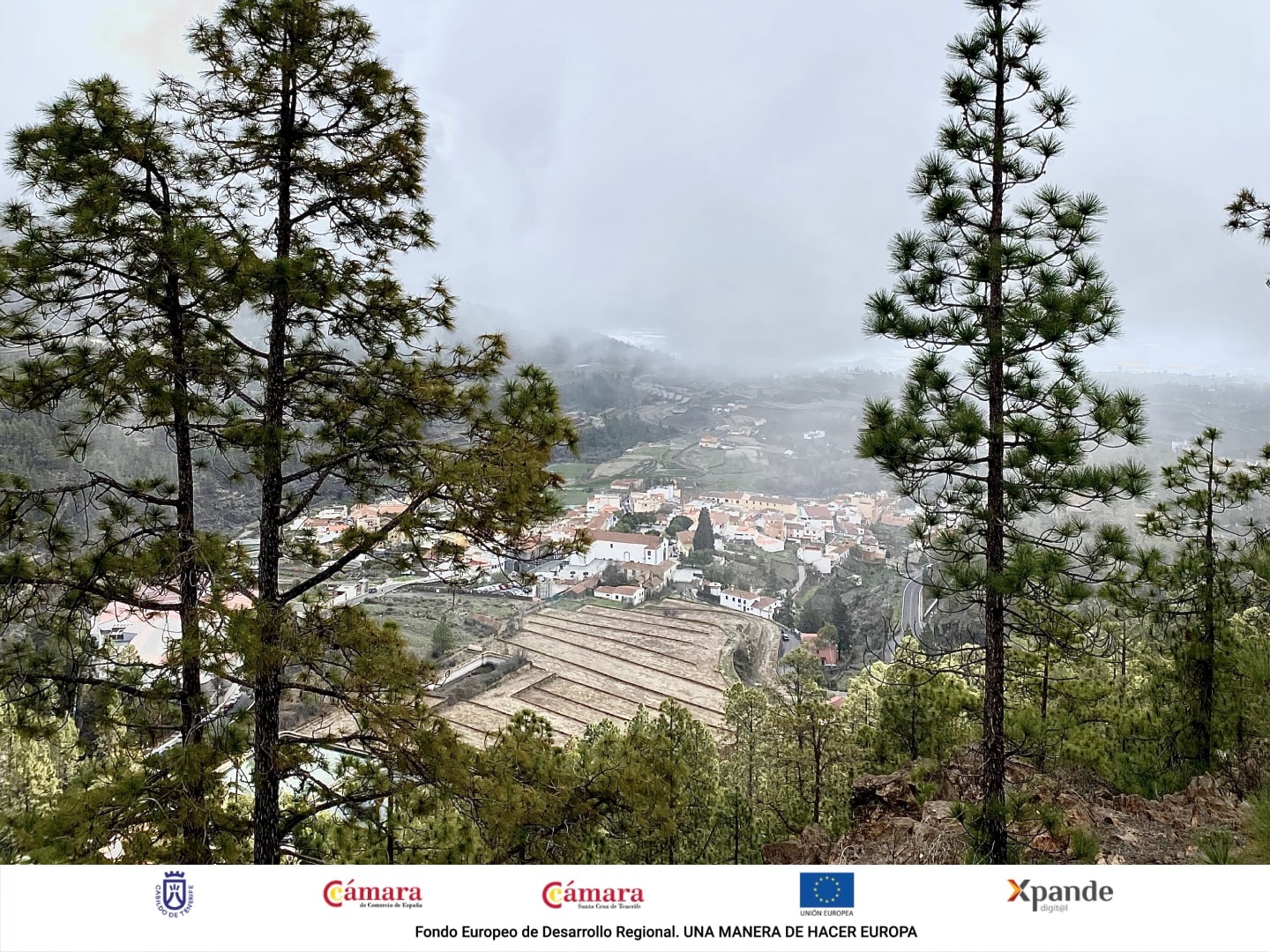 Photo: Views from the Mirador de Vilaflor.
Photo: Views from the Mirador de Vilaflor.English presence in the history of Vilaflor
One of the legacies of the United Kingdom in the village is Casa Inglesa (literally translated as “english house”), located in the square of the Church of St. Pedro. It is a century-old house built in the 19th century in which successive Englishmen lived. For example, for 20 years the house was inhabited by Mary Edward and, later, by the Reverend priest Thomas Gifford Nash. Today, the house is used as a clergy house.
In the history of Vilaflor there are numerous English personalities. For example, the English botanist P. B. Webb wrote with the French naturalist Sabine Berthelot the Histoire Naturelle des lles Canaries. In this work they included illustrations of the cypresses of Vilaflor de Chasna, such as those that to this day still stand out above the church.
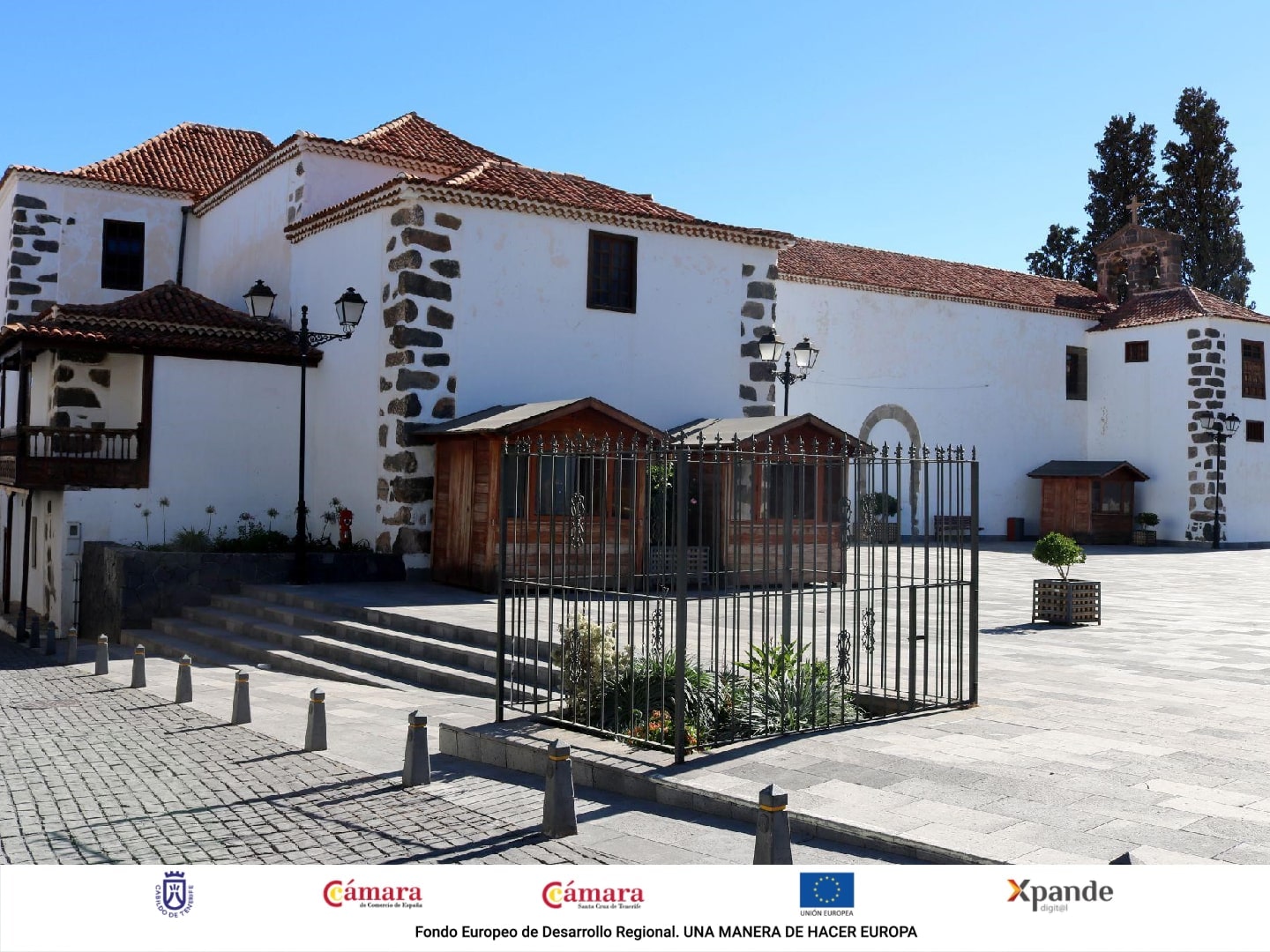 Photo: Church of San Pedro, with cypresses behind.
Photo: Church of San Pedro, with cypresses behind.The origin of the name of Vilaflor
The fable of the origin of the name is one of the most symbolic. Before the 15th century, in the Guanche (former aboriginal inhabitants of Tenerife) era, prior to European colonization, this village was called Chasna and belonged to the ‘menceyato’ (an ancient canarian name that means ‘kingdom’) of Abona. Then, the name became Vilaflor de Chasna as a result of the infatuation suffered by Captain Pedro Bracamonte with an aboriginal young woman.
E. Rodríguez Núñez published in the newspaper Diario de Tenerife on September 10, 1887 the translation of some fragments of the book Río de la Plata y Tenerife (1870) by Professor Pablo Mantegazza. One of them tells the story of the origin of the name of Vilaflor:
"In 1496 the guanches, entrenched in the mountains, fought for their independence. Pedro de Bracamonte, one of the captains of Alonso do Lugo, [...] found a young Guanche woman who he imprisoned, but she escaped a few days later. The noble Castilian, madly in love with her, could not resist this cruel loss and returned to the camp in a state of madness. His comrades-in-arms and friends could not appease him, and after three days of delirium, he died. He was always shouting: I saw the flower of the valley, I saw the flower, I saw the flower (“ Vi la flor”), and with these words he breathed out. The soldiers of Lugo, give the valley the name of Vilaflor, in memory of that unhappy captain, although later prevailed the indigenous name of Chasna'''
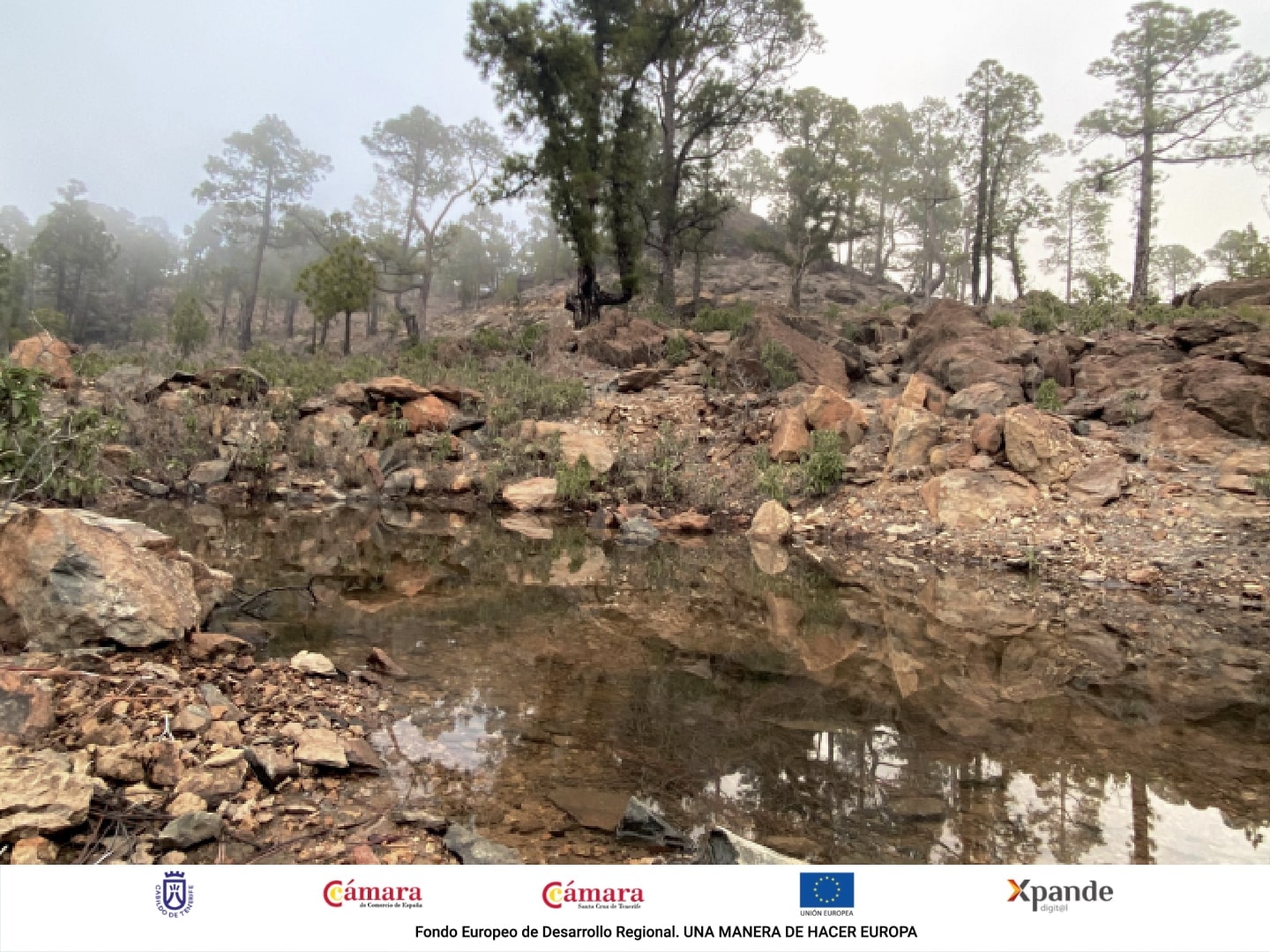 Photo: remains of rain by GR131 Camino de Chasna.
Photo: remains of rain by GR131 Camino de Chasna.The strange crime of Vilaflor: murder of the 7th Marquis de la Fuente de Las Palmas
Other well-known legend of the village revolve around the crime of 1840, when twelve masked men with rifles murdered the VII Marquis de la Fuente de Las Palmas, Alonso Chirino del Hoyo-Solórzano, in Vilaflor. However, history goes back years.
In 1825, the Marquis inherited the majorat of the Solers and a wide variety of properties in the village. However, he continued to claim more land and water that had been and was being used by Vilaflor landlords. For decades, there were lawsuits and confrontations between him and the inhabitants, because the European invaders had the right to evict the tenants due to the abusive model of leasing, urging them to emigration and hunger.
They started a trial and, in 1833, the Marquis won the sentence. After several days, twelve masked men decided to take revenge and put an end to the confrontation, ending his live when he were on his way from Granadilla to Vilaflor.
The case was subsequently left unresolved and a veil of silence was established throughout the village.
 Photo: views from Pino Enano, in Vilaflor.
Photo: views from Pino Enano, in Vilaflor.Vilaflor, a jewel for nature tourism and landscapes in Tenerife
Apart from the clear English presence and its legends, Vilaflor is a really interesting and peculiar village due to its altitude (an average of 1811 meters above sea level), its proximity to Teide and its impressive landscapes.
The most representative natural element of the municipality is the Canary Island pine. The village has the longest pine forest in the Canary Islands and the only one on the island that is not repopulated.
In fact, there are two examples of this pine of incalculable natural value:
Pino Gordo: Canary Island pine (Pinus canariensis) which reaches 45 meters in height and is therefore the second highest tree in Spain.
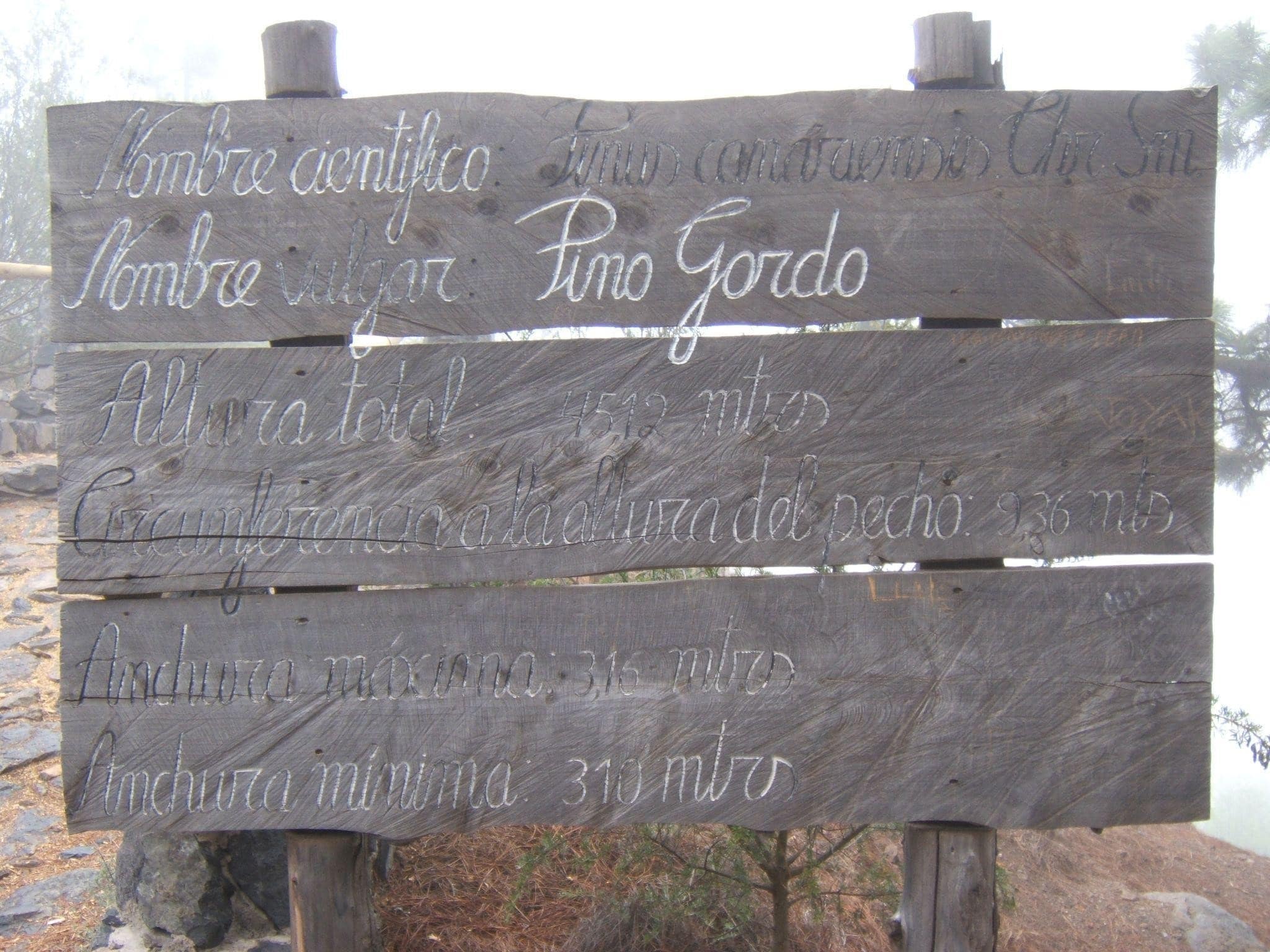
Detail of a sign with details of Pino Gordo, Image: Klauhar, CC BY-SA 3.0 , via Wikimedia Commons
Pino de las Dos Pernadas: the highest native tree in the country, with 56.03 meters high
The natural wealth of Villaflor not only stands out for its pines, in this municipality there are also spaces attached to the Canary Network of Protected Natural Areas of Teide National Park, the Corona Forestal Natural Park, the Montaña Colorada Natural Monument and the Ifonche Protected Landscape.
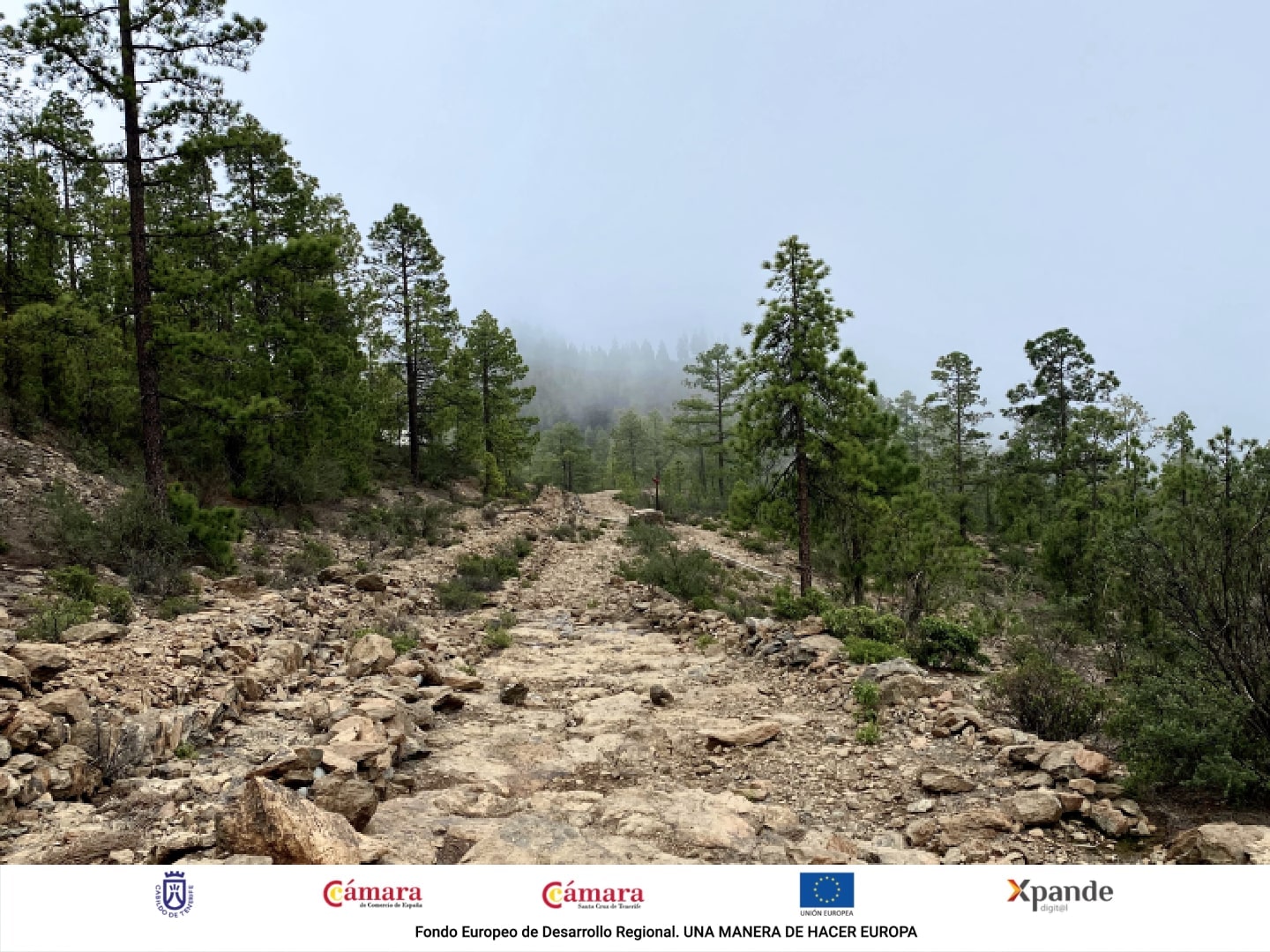
Photo: Corona Forestal Natural Park in the municipality of Vilaflor, near the Barranco de las Lajas.
On the other hand, the climate of Vilaflor is really fascinating. It is dry and sunny most of the year, but in winter, especially at the summit, it might snow.
Tomás Cervia (Santa Cruz de La Palma, 1902), a graduate and doctor at the Faculty of Medicine of the University of Madrid, wrote on 24th January 1932 in the newspaper La Prensa:
To talk about Vilaflor is to talk about its climate. Vilaflor’s climate is peculiar and unique on the island. Vilaflor-village and Vilaflor-climate are twin and inseparable ideas. It is not that Vilaflor has only its climate as a possibility; Vilaflor has its wealth in water and in agriculture, it has its special situation of connection of the South with the North of Tenerife, it has its tourist advantages, its forests, its height. Everything in embryo, everything ready to be developed by intelligent initiatives, clear vision, in the face of anything that means inertia, incomprehension, isolation.
However, the climate of Vilaflor is fundamental because it summarizes all these advantages and unifies them; because all climate is the result of multiple factors, all interesting and all advantageously present in Vilaflor: height, orientation, horizons, atmosphere, trees, solar radiation, water...
Vilaflor-climate, resting place, healing place. Here is the richest and at the same time the most beautiful for being the most human of all possibilities of Vilaflor. This is a programme to develop.
Place of rest, of isolation. Why repeat all the dithyrambs that have been dedicated to it? Why mention its placidity and its charms?
Bibliografía